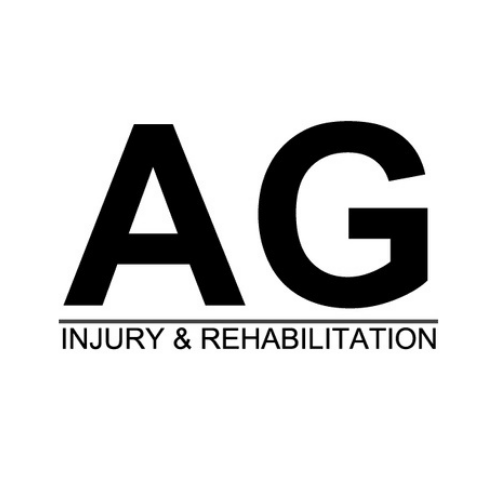Ever wondered why that nagging pain on the outside of your knee won't go away? For millions of active individuals, IT band syndrome is the hidden culprit behind their persistent discomfort. This common but often misunderstood condition affects everyone from weekend warriors to elite athletes, disrupting training routines and daily activities.
Understanding and properly treating IT band syndrome doesn't have to be complicated. With the right combination of stretches and exercises, you can target this troublesome tissue and get back to doing what you love. The key lies in knowing which movements effectively address the root cause while providing immediate relief.
Understanding IT Band Syndrome
The IT band syndrome is a thick strip of connective tissue extending from your hip to your shin bone. When this band becomes irritated or inflamed, it results in IT band syndrome, a common condition among runners and cyclists. The main symptoms include sharp pain on the outer part of the knee and noticeable swelling in the affected area.
Most people develop IT band syndrome through repetitive activities that stress the knee joint. Activities like running downhill or on uneven surfaces often trigger symptoms. Tight muscles in the hips and legs can also put extra strain on the IT band.
Quick treatment is key - waiting too long can make symptoms worse and lead to chronic pain. Physical therapy, proper stretching, and activity modification help most people recover fully.
The Role of Stretching in IT Band Recovery
Stretching plays a vital role in managing IT band syndrome. Regular stretching reduces muscle tension around the knee and hip area, providing relief from discomfort. When done correctly, these movements help loosen tight tissue and boost flexibility in the affected region.
Daily stretching creates long-term benefits by keeping the IT band stretches and surrounding muscles flexible. This improved mobility helps prevent future flare-ups and reduces the risk of re-injury. The key is focusing on specific stretches that target both the IT band itself and connected muscle groups.
Physical therapists recommend combining gentle stretches with proper form to get the best results. Starting with basic movements and slowly working up to more advanced stretches helps build a strong foundation for recovery.
Standing IT Band Stretch
The standing IT band stretch offers direct relief for outer knee pain while improving leg flexibility. Here's how to do it properly:
Start by placing your feet shoulder-width apart. Cross your right leg behind your left leg, keeping both feet flat on the ground. Slowly lean your upper body to the left side until you feel a pulling sensation along the outside of your right leg. Hold this position for 30 seconds while taking deep breaths.
Switch sides and copy the movement with your left leg crossed behind. Keep your back straight throughout the stretch to target the IT band effectively. For best results, perform this stretch 2-3 times on each side daily, especially after exercise when your muscles are warm.
Seated IT Band Stretch
The IT band stretches to relieve deep muscle tissue and works best after physical activity. To perform this stretch correctly, start by sitting on the floor with both legs stretched out in front of you. Next, bend your right leg and cross your right foot over your left knee, placing it flat on the floor. Slowly turn your upper body toward your bent knee.
As you twist, keep your spine tall and your breathing steady. You should feel a stretch along the outside of your right leg and hip. Hold this position for 30 seconds before switching to the other side. For maximum benefit, do this stretch twice each day - once in the morning and again after exercise when your muscles are warm.
Foam Roller IT Band Release
Using a foam rolling technique on your IT band helps loosen tight muscles and reduces discomfort. This technique works by applying pressure to break up muscle knots and restore proper tissue mobility.
Start by lying on your side with the foam roller placed under your outer thigh. Position yourself so the roller sits between your hip and knee. Using your arms for support, slowly roll up and down the length of your IT band. Keep the movement controlled and steady.
Roll each side for 1-2 minutes, focusing extra attention on particularly tender spots. If you find a sensitive area, pause there for 20-30 seconds. Perform this technique after workouts when your muscles are warm and responsive to the pressure.
For best results, maintain even pressure and remember to breathe throughout the movement. If the pressure feels too intense, support more of your body weight with your arms.
Pigeon Pose
The pigeon pose helps stretch tight muscles around the IT band while improving hip mobility. This yoga-based movement targets multiple areas at once, making it an effective addition to your IT band treatment plan.
Start in a push-up position with your hands shoulder-width apart. Bring your right knee forward and place it behind your right wrist. As you lower your body, extend your left leg straight behind you. Your right shin should be at an angle, creating a comfortable stretch through your hip.
Keep your hips level with the ground to maximize the stretch. Hold this position for 30-60 seconds while breathing steadily. Switch sides to stretch both hips equally. Add this stretch to your daily routine, performing it after warming up your muscles through light activity.
Remember to move slowly into the pose and stop if you feel any sharp pain. Focus on maintaining proper form rather than trying to sink deeply into the stretch right away.
Side-Lying Leg Raise
The side-lying leg raise builds strength in the muscles that support your IT band and hip area. This simple yet effective exercise helps prevent future IT band issues by improving stability.
Start by lying on your side with both legs straight. Stack your hips and legs, keeping your body in one long line. Slowly lift your top leg about 45 degrees, maintaining alignment with your body. Lower the leg with control, stopping just before it touches the bottom leg.
Perform 10-15 repetitions on each side. Keep your core tight throughout the movement to maintain proper form. Your hip should do the work - avoid rolling backward or forward during the exercise.
Practice this movement 3-4 times per week, completing 3 sets per leg. If the exercise feels too easy, add ankle weights for extra resistance. Remember to breathe steadily and focus on smooth, controlled movements.
Clamshell Exercise
The IT band syndrome targets and strengthens the hip abductor muscles, which play a key role in IT band health. This simple movement helps create stability in the hip area and reduces stress on the IT band.
Lie on your side with your knees bent at a 45-degree angle and your feet stacked together. While keeping your feet touching, lift your top knee as high as you can without moving your pelvis. Lower your knee back down with control. Your bottom leg should stay in contact with the floor throughout the movement.
Complete 15-20 repetitions on each side. Watch that you don't roll backward during the exercise - your hips should stay stacked vertically. Make this exercise part of your regular routine, performing it three times weekly for the best results. If the movement becomes too easy, add a resistance band around your thighs just above your knees.
Glute Bridge
The glute bridge strengthens the muscles that support your IT band, reducing strain on the knee joint. To perform this exercise correctly, lie on your back with your knees bent and feet flat on the floor. Press through your heels to lift your hips off the ground until your body forms a straight line from your shoulders to your knees.
Hold the position for 2-3 seconds while squeezing your glutes tightly. Lower your hips back to the starting position with control. Perform 10-15 repetitions, focusing on smooth, steady movements. Make sure your core stays engaged throughout the exercise to protect your lower back.
Do 2-3 sets of glute bridges five times per week. Keep your feet hip-width apart and point your toes forward. If the basic movement becomes too easy, try lifting one leg off the ground during the bridge to increase difficulty.
Standing Hip Abduction
The standing hip abduction builds side hip muscle strength while supporting proper IT band function. This simple movement helps create better knee stability and reduces strain on the outer leg.
Start by standing straight near a chair or wall for balance. Keep your core tight and slowly lift one leg out to the side, maintaining an upright torso position. Your moving leg should stay in line with your hip - avoid pointing your toes up or down. Lower your leg with control back to the starting position.
Perform 15 repetitions on each side. Watch that your upper body stays still throughout the movement. For extra work, add light ankle weights once you master proper form. Practice this exercise daily, ideally after a short warm-up, to build lasting hip strength and support healthy IT band function.
Cross-Body Hip Stretch
The best IT band stretches provides direct relief for tight IT bands while improving hip mobility. To start, lie flat on your back with both legs extended. Cross your right ankle over your left knee, creating a figure-four position. Reach your hands behind your left thigh and gently pull your left knee toward your chest.
Keep your lower back pressed against the floor throughout the movement. You should feel a stretch along the outer part of your right hip. Hold this position for 30 seconds while taking steady breaths. Switch legs and repeat the stretch on your other side.
Perform this stretch after completing your other IT band exercises when your muscles are warm. The gentle pulling motion helps release tension in both the hip and IT band area. For best results, maintain proper form and avoid bouncing or forcing the stretch.
Wall IT Band Stretch
The iliotibial band syndrome offers a stable way to reduce tension in the outer leg muscles. This stretch uses a wall for support, making it ideal for those new to IT band stretches or anyone seeking extra stability during their routine.
Begin by standing next to a wall, positioning yourself about an arm's length away. Cross your outside leg over your inside leg, keeping both feet flat on the ground. Slowly lean your hip toward the wall until you feel a stretch along the outside of your leg. Your body weight should press gently into the wall.
Hold this position for 20-30 seconds while breathing normally. Pay attention to your leg placement - adjust your stance if needed to find a comfortable stretch without strain. Switch sides and repeat the movement to keep your IT bands balanced.
Add this stretch to your daily routine, performing it at least once per day. For maximum benefit, do this stretch after physical activity when your muscles are warm.
Final Thoughts on IT Band Recovery
Incorporating these IT band stretches into your daily routine is more than just a quick fix—it's an investment in your long-term mobility and comfort. While each stretch plays a unique role in your recovery, consistency is the true key to success. Remember to start gently and progress gradually, allowing your body time to adapt to these new movements.
By maintaining a regular stretching routine and paying attention to proper form, you'll build a strong foundation for preventing future IT band issues. Combined with appropriate activity modification and proper warm-up techniques, these stretches can help you maintain an active lifestyle while keeping IT band syndrome at bay.

